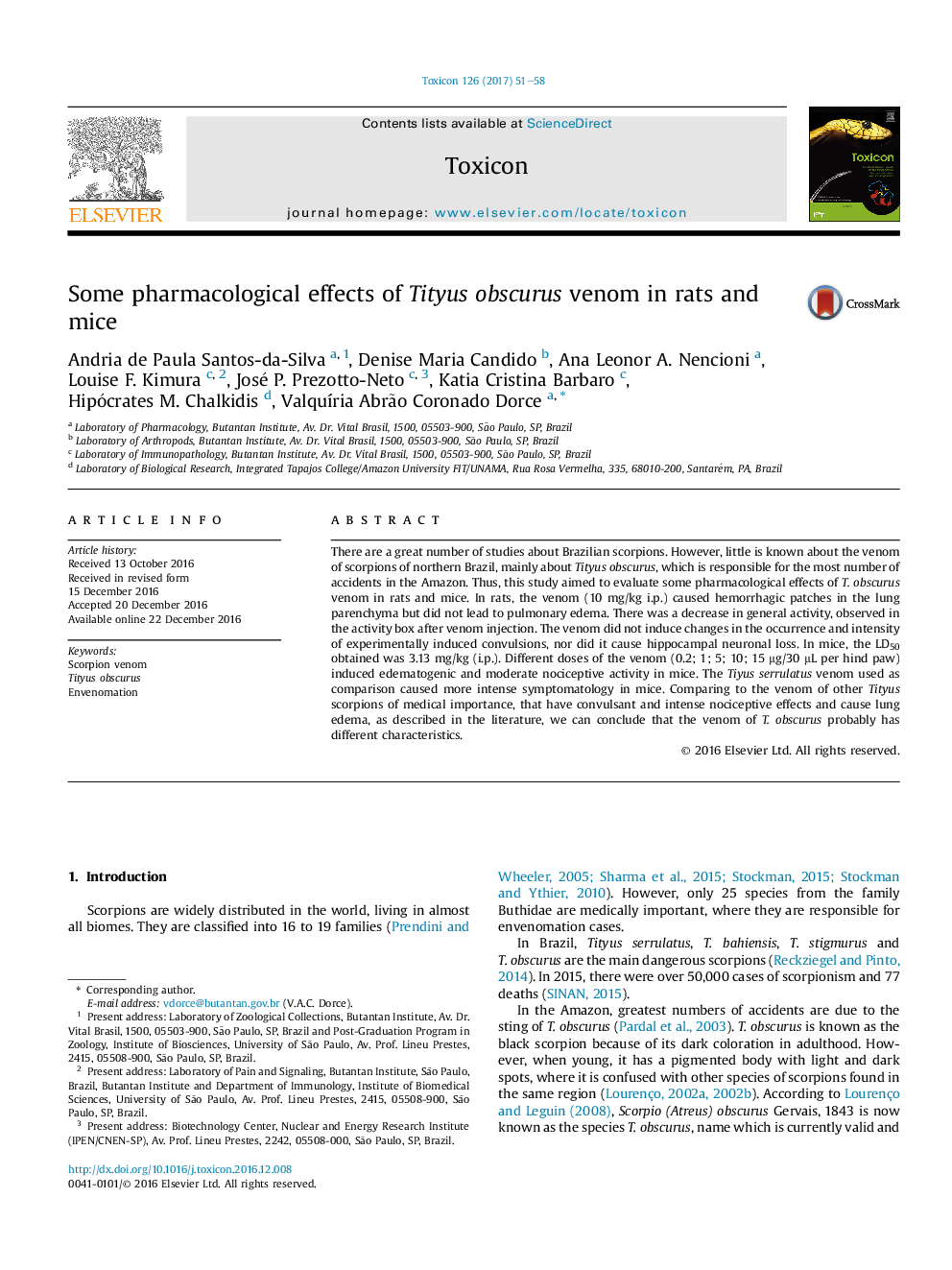| کد مقاله | کد نشریه | سال انتشار | مقاله انگلیسی | نسخه تمام متن |
|---|---|---|---|---|
| 5519381 | 1544110 | 2017 | 8 صفحه PDF | دانلود رایگان |
- Tityus obscurus is the main scorpion responsible for accidents in the Amazon region.
- Tityus obscurus, similar to T. serrulatus venom, exerted edematogenic activity in mice.
- Tityus obscurus venom caused hemorrhagic patches in the lung of rats.
- Both nociceptive and lethal activities of T. obscurus venom were lower than those caused by T. serrulatus venom in mice.
There are a great number of studies about Brazilian scorpions. However, little is known about the venom of scorpions of northern Brazil, mainly about Tityus obscurus, which is responsible for the most number of accidents in the Amazon. Thus, this study aimed to evaluate some pharmacological effects of T. obscurus venom in rats and mice. In rats, the venom (10 mg/kg i.p.) caused hemorrhagic patches in the lung parenchyma but did not lead to pulmonary edema. There was a decrease in general activity, observed in the activity box after venom injection. The venom did not induce changes in the occurrence and intensity of experimentally induced convulsions, nor did it cause hippocampal neuronal loss. In mice, the LD50 obtained was 3.13 mg/kg (i.p.). Different doses of the venom (0.2; 1; 5; 10; 15 μg/30 μL per hind paw) induced edematogenic and moderate nociceptive activity in mice. The Tiyus serrulatus venom used as comparison caused more intense symptomatology in mice. Comparing to the venom of other Tityus scorpions of medical importance, that have convulsant and intense nociceptive effects and cause lung edema, as described in the literature, we can conclude that the venom of T. obscurus probably has different characteristics.
Journal: Toxicon - Volume 126, February 2017, Pages 51-58
